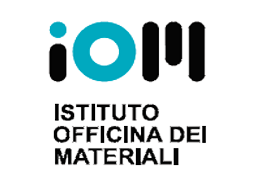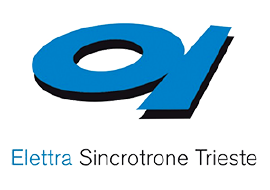Multiferroic Heterostructures: changes in magnetism regulated by photostriction
In this study, by combining electrical, structural, magnetic, and spectroscopic characterizations, we show how light illumination modifies significantly the properties of Pb(Mg1/3Nb2/3)O3-0.4PbTiO3 (PMN-PT) substrate, and how these changes affect the magnetic properties of interfacial Ni. First, the magnetism in pristine PMN-PT/Ni heterostructure was analyzed by Magneto–Optic Kerr Effect (MOKE), both without and with 405 nm laser illumination of variable intensity (Fig. 1a). The effects of illumination for a magnetic field H // [010] are shown in Fig. 1b. A large HC reduction was detected under light, up to 45% under illumination of 800 mW cm−2, while the changes in magnetic remanence were negligible. These magnetic changes are fully reversible and reproducible, with the magnetic signal fully restored after switching the laser off.

X-ray magnetic circular dichroism (XMCD) measurements were carried out to determine the magnetic changes of Ni under illumination. The Ni spectra show an L3 edge XMCD intensity of (7.1 ± 0.1)% with no light and (7.9 ± 0.1)% under illumination, while the dichroic signal at L2 edge does not change (Fig. 1c). This is a signature of change of Ni orbital moment induced by PMN-PT photostriction under light. By applying the XMCD sum rules, we derived the spin (mspin) and orbital (morb) magnetic moments of Ni. It results that the ratio morb/mspin was found to be 0.0940 with no light and 0.1149 under illumination. The change of this ratio for Ni represents the interface induced effect driven by PMN-PT photostriction when under illumination. This is to our best knowledge the first reported spectroscopic evidence of this interfacial coupling in multiferroic heterostructures.
PMN-PT/Ni was then electrically polarized and photocurrent is recorded for three polarization states (Pristine, Pup and Pdown). The resulting curves are shown in Fig. 1d. Slow dynamics with opposite trends were measured in polarized states. As light was switched on, a photocurrent peak of opposite sign (positive for Pdown, negative for Pup) appeared, exponentially decaying toward a steady value comparable to the pristine one. Once switched off, a similar transient effect opposite in sign was observed, with a relaxation time comparable to that under light. These effects prove the presence of a net electric dipole after polarization.
Once polarized, the PMN-PT photostrictive effects on magnetostrictive Ni are reduced, with negligible changes for both MOKE and XMCD measurements. We attribute such difference between polarized and pristine substrate to its structural properties, as proved via x-ray diffraction measurements.





